Affiliate links on Android Authority may earn us a commission. Learn more.
Google Pixel 5 unboxing and hands-on: The premium Pixel for 2020
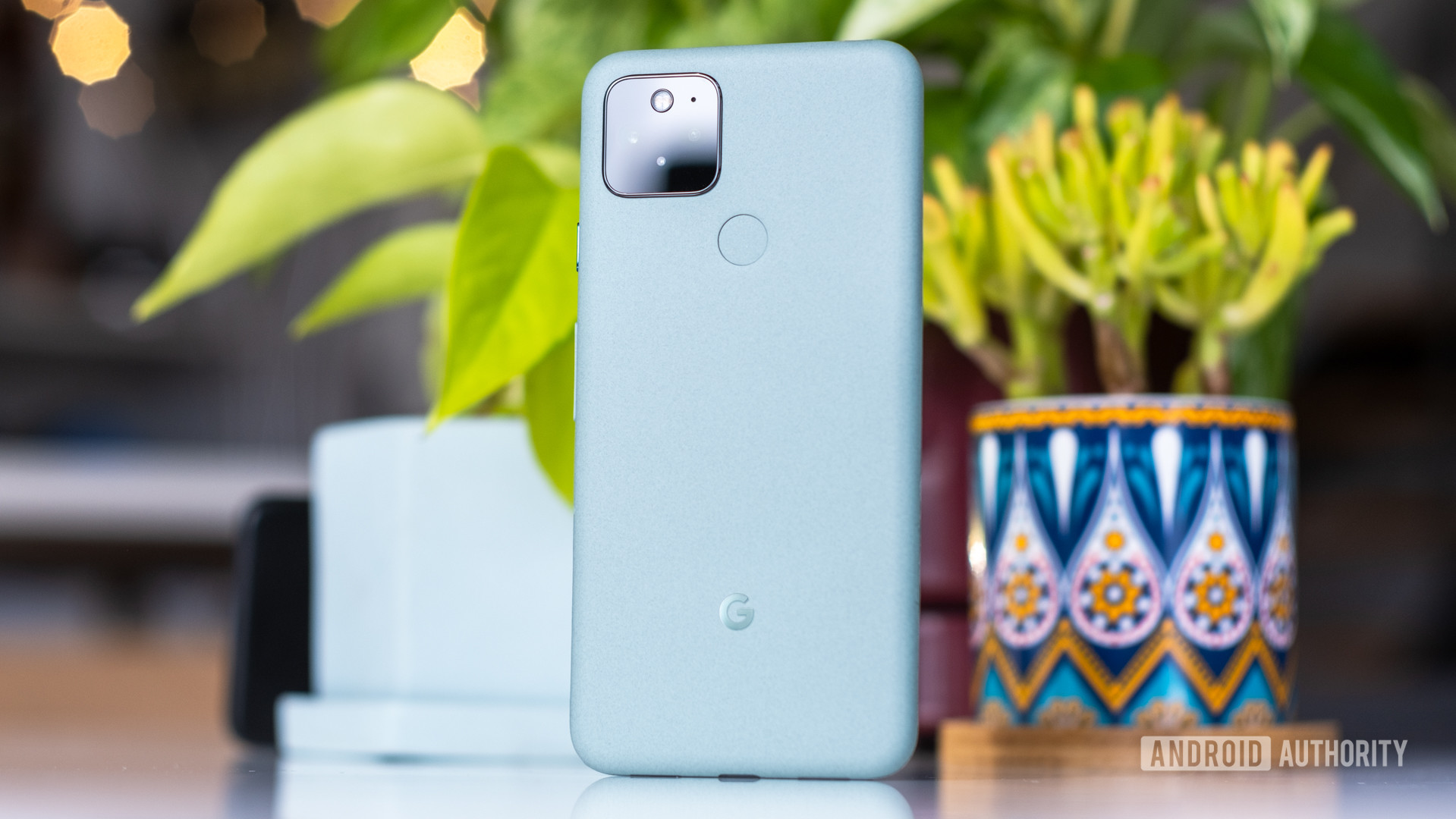
We recently unboxed the Google Pixel 4a 5G. That phone seemed like the Goldilocks device of this year’s Pixel lineup, with the biggest display, a wide-angle camera, and a Qualcomm Snapdragon 765G chipset with 5G connectivity. Nevertheless, some people want a more premium device than the Pixel 4a 5G. And for those people, there’s the Google Pixel 5.
Join us as we go hands-on with the new Google Pixel 5.
What’s in the box?
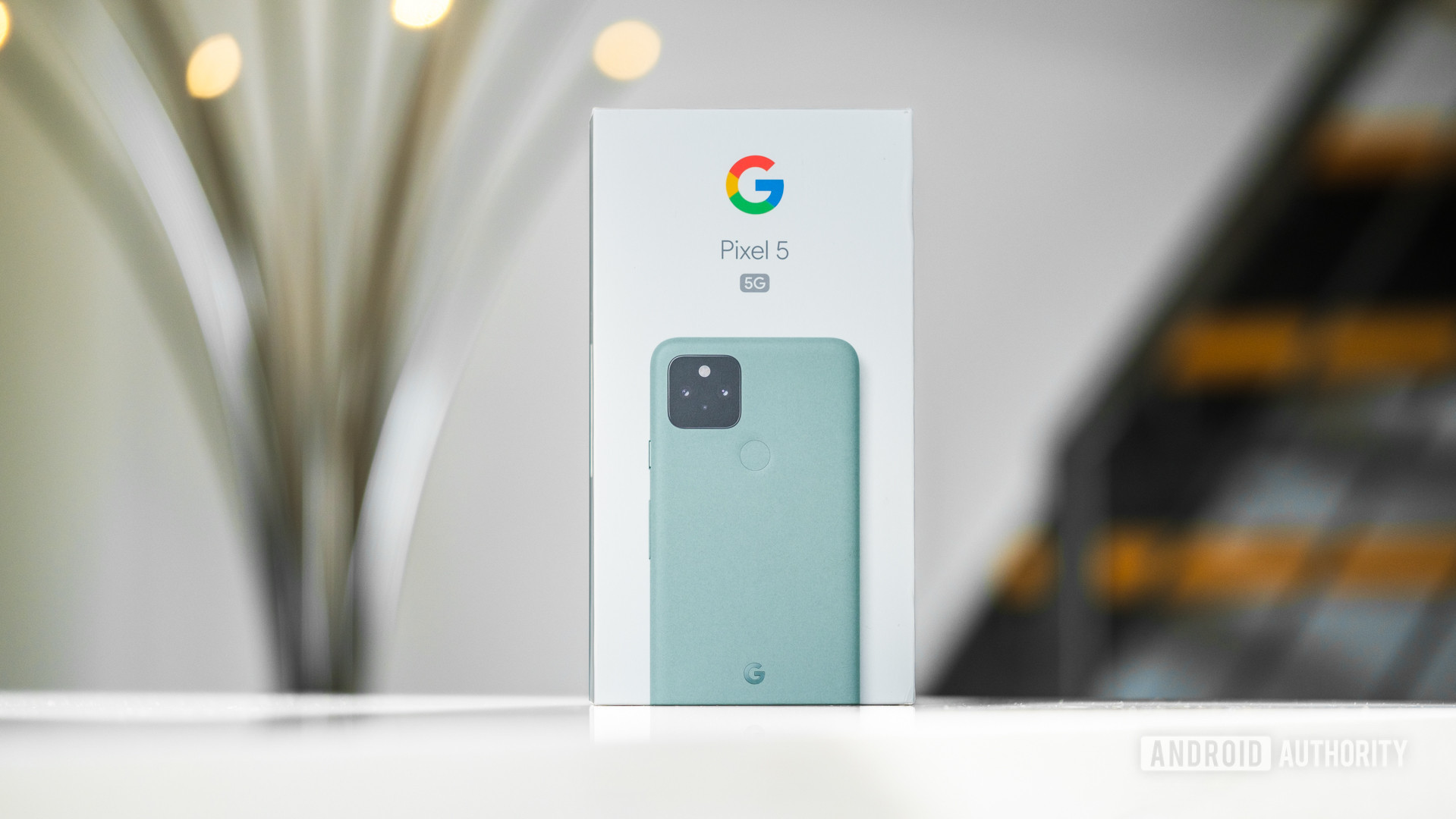
Inside the box for the Pixel 5, you’ll find the phone, alongside a quick start guide, an 18W power brick, a power cable, and a female USB-A to male USB-C adapter. This is pretty much the standard fare for Pixels these days. The same collection of accessories came in the box of the Pixel 4a and Pixel 4a 5G too. Some might be a bit bummed that Google didn’t include any USB-C headphones for the device, but it seems the company is going fairly minimalist this year.
While 18W is passable for charging speeds, it’s beginning to feel slow when compared to other devices. Even budget phones like the OnePlus Nord commonly see 25W, 30W, or more. It would be nice to see Google move to faster charging soon, especially on its most expensive Pixel of the year. We’re hoping the 4,080mAh battery lasts longer than previous Pixels did, but still, faster charging would be appreciated.
How’s the build quality?
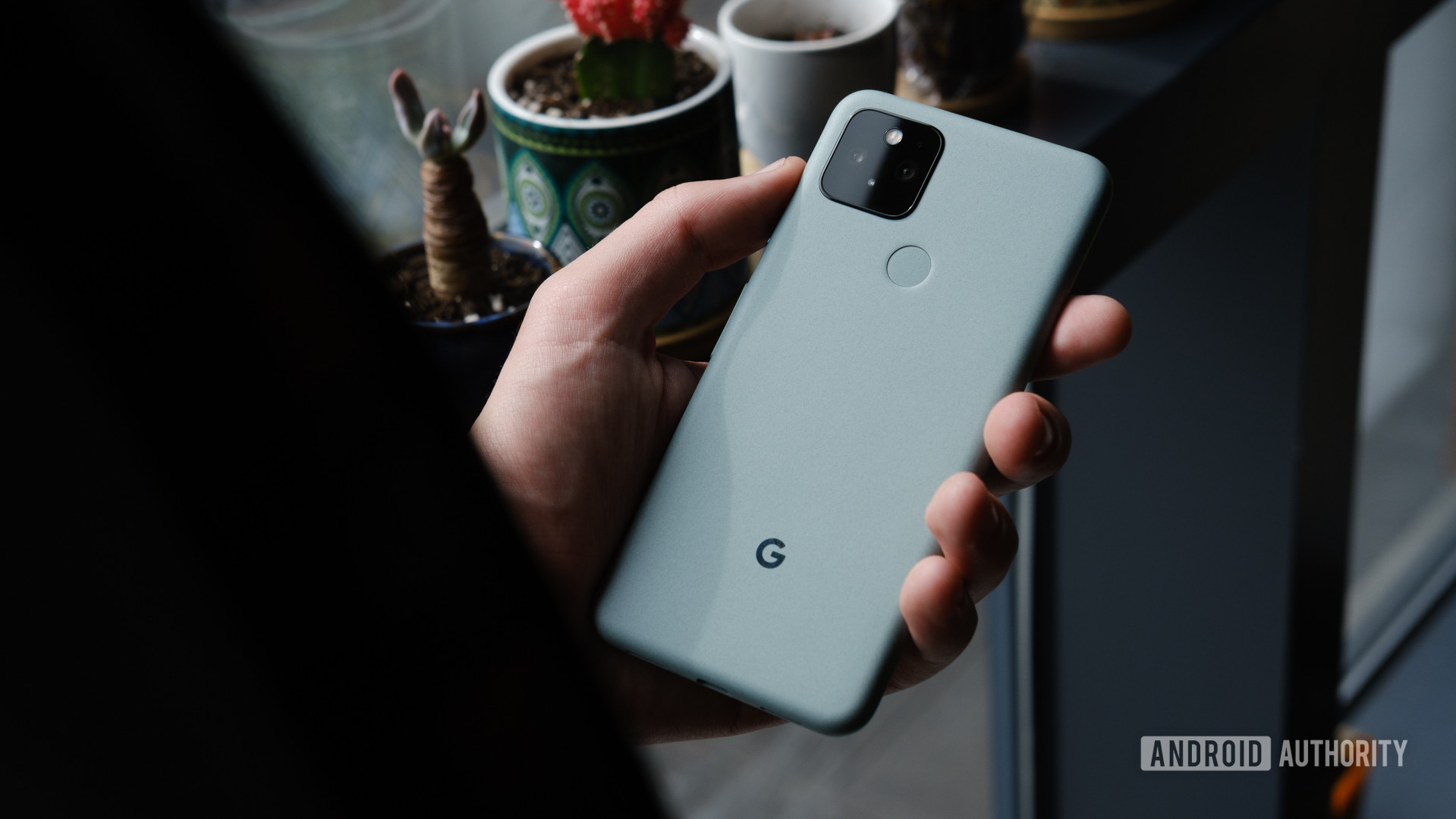
The Pixel 5 is technically made of aluminum with a bio-resin material on top of it. Google did this to allow for wireless charging, making this one of the only metal devices to sport the feature. But the phone doesn’t actually feel like metal. That bio-resin plastic material on top feels a lot more like the material on the Pixel 4a, with just a bit more coarseness. I like it, but I would have liked something even more coarse. Think OnePlus One sandstone coarse. That’s the ticket.
The Pixel 5 has a super similar design to that of the Pixel 4a and Pixel 4a 5G. The bottom of the phone houses a USB-C port and speakers, the left side houses a SIM card tray, and the right side sports a volume rocker and a power button. This power button is metallic too, which gives the impression that this is the most premium of the Pixels offered by Google this year. It’s fairly clicky, but not quite as clicky as I would like. I like the power button on the Pixel 4a better.
One major downside of the Pixel 5 is the fact that Google ditched the headphone jack on this model. I’m not sure why companies always ditch this jack on their most premium phones, but I would presume it’s because they want to sell more true wireless earbuds. If you still want a headphone jack, you’ve got a pretty small pool of premium devices to choose from in 2020.
On the back, you’ve got a fairly clean device, save a fingerprint reader and camera module. That’s right, Google cut the Soli radar chip this year in favor of fingerprint unlock. While I’m a bit sad to see the tech die, it was mostly a battery hog on the Pixel 4, and fingerprint unlocking is a better option in the age of COVID-19.
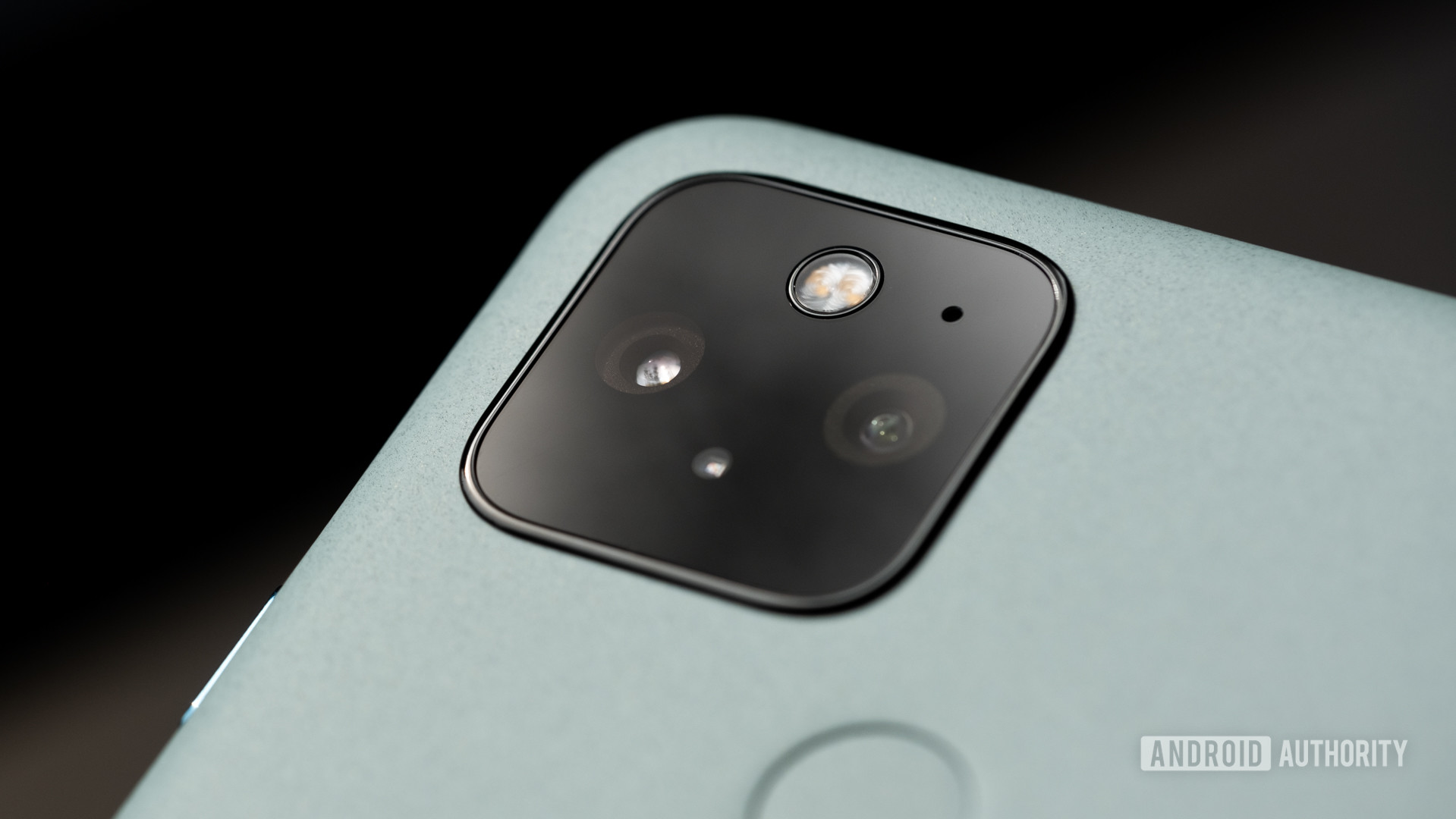
The rear camera setup houses the 12MP sensor that Google has been using for years, alongside a new 16MP wide-angle sensor. The wide-angle is in the Pixel 4a 5G as well, making it one of the key similarities between these two devices. I would have liked to see a physically larger sensor in the flagship Pixel this year, mostly because many other companies have caught up or exceeded the image quality Google can provide. Images are still fantastic, but I feel they would be even better if the sensor could get more light.
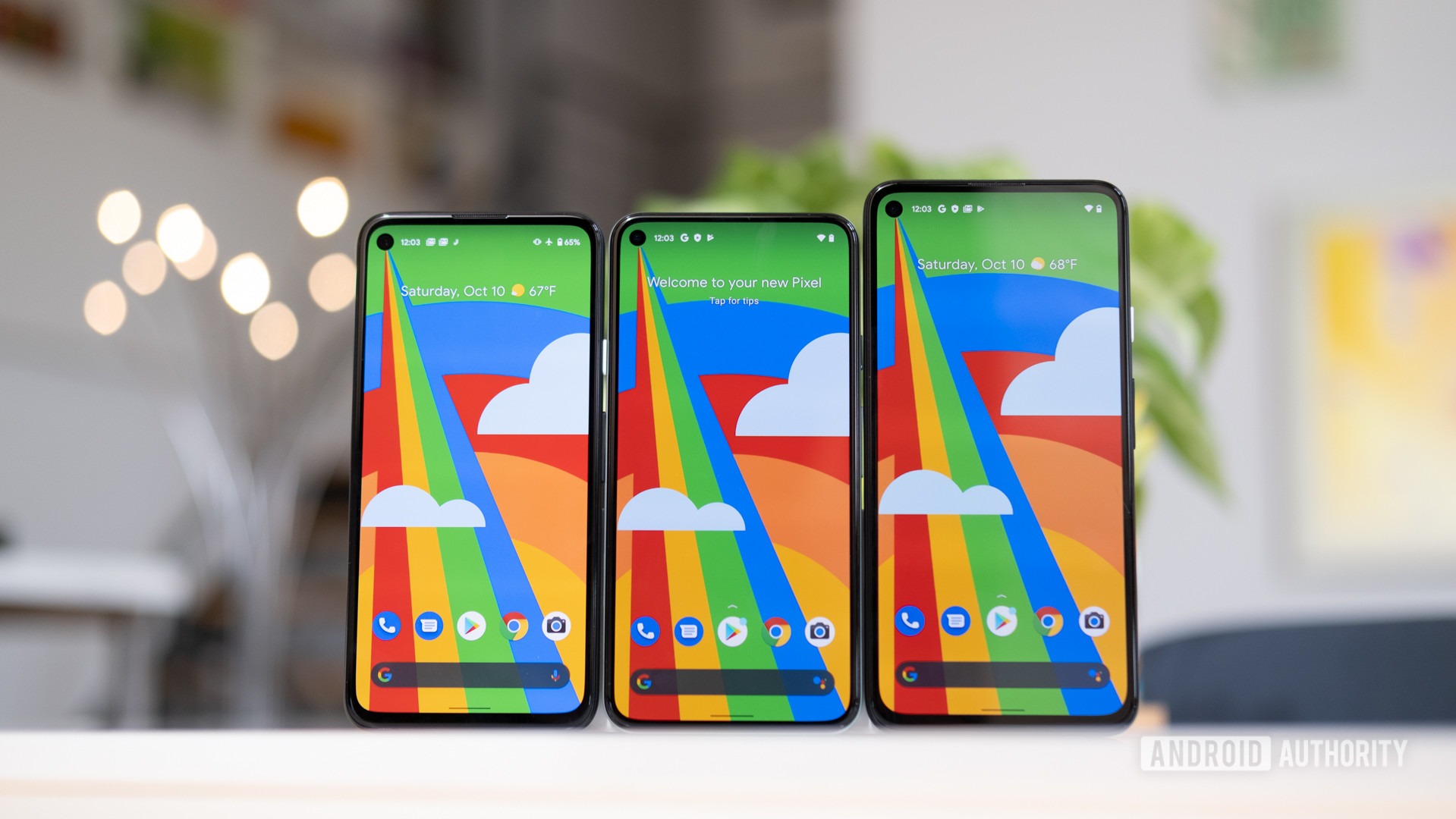
Next to the Pixel 4a and Pixel 4a 5G, I was surprised at how small the Pixel 5 is. It’s got almost the exact same footprint as the Pixel 4a, but its bezels are just a bit smaller on the top and bottom, giving it a larger 6-inch display versus the 5.8-inch display on the Pixel 4a. The smaller bezels aren’t incredibly noticeable, but they help solidify the Pixel 5 as the flagship Google phone compared to the other two devices.
How’s the screen?
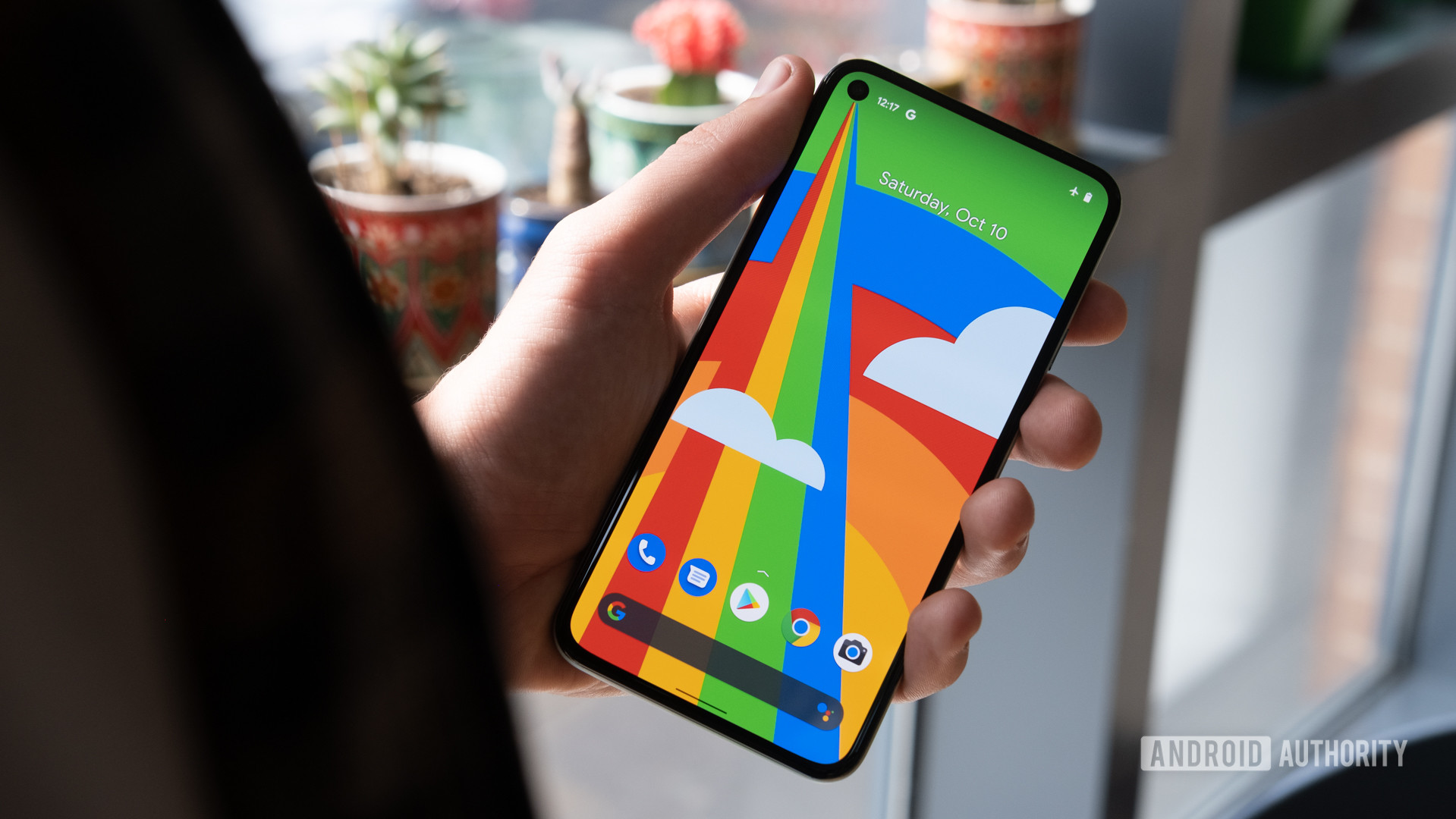
Compared to the Pixel 4a and Pixel 4a 5G, the display on the Pixel 5 has similar brightness, color, and contrast. It looks fantastic in my opinion, even if it’s only FHD+. The Pixel 4a has one of the best displays we’ve tested this year, and we expect the Pixel 5 to perform similarly. We’ll be sure to perform our full objective testing suite on this device in the full Pixel 5 review.
One nice thing about the Pixel 5 compared to the Pixel 4a and Pixel 4a 5G is its 90Hz display. It is an adaptive OLED display, which means it will dynamically change between 60Hz and 90Hz depending on the situation to save battery. It would have been nice to see a 120Hz display on Google’s 2020 flagship, but considering Google is marketing this as an upper mid-range device, 90Hz is acceptable.
You’ll also notice a punch-hole camera cutout in the top-left portion of the Pixel 5’s display, housing an 8MP shooter. I’m a fan of this selfie camera design because the cutout is about the same size as a notification icon, which means it doesn’t really feel in the way.
Overall, I think Google has done a great job with its displays this year. While there is technically a resolution drop compared to the Pixel 4 XL, I can’t notice it during daily use. They look great.
What about the internals?
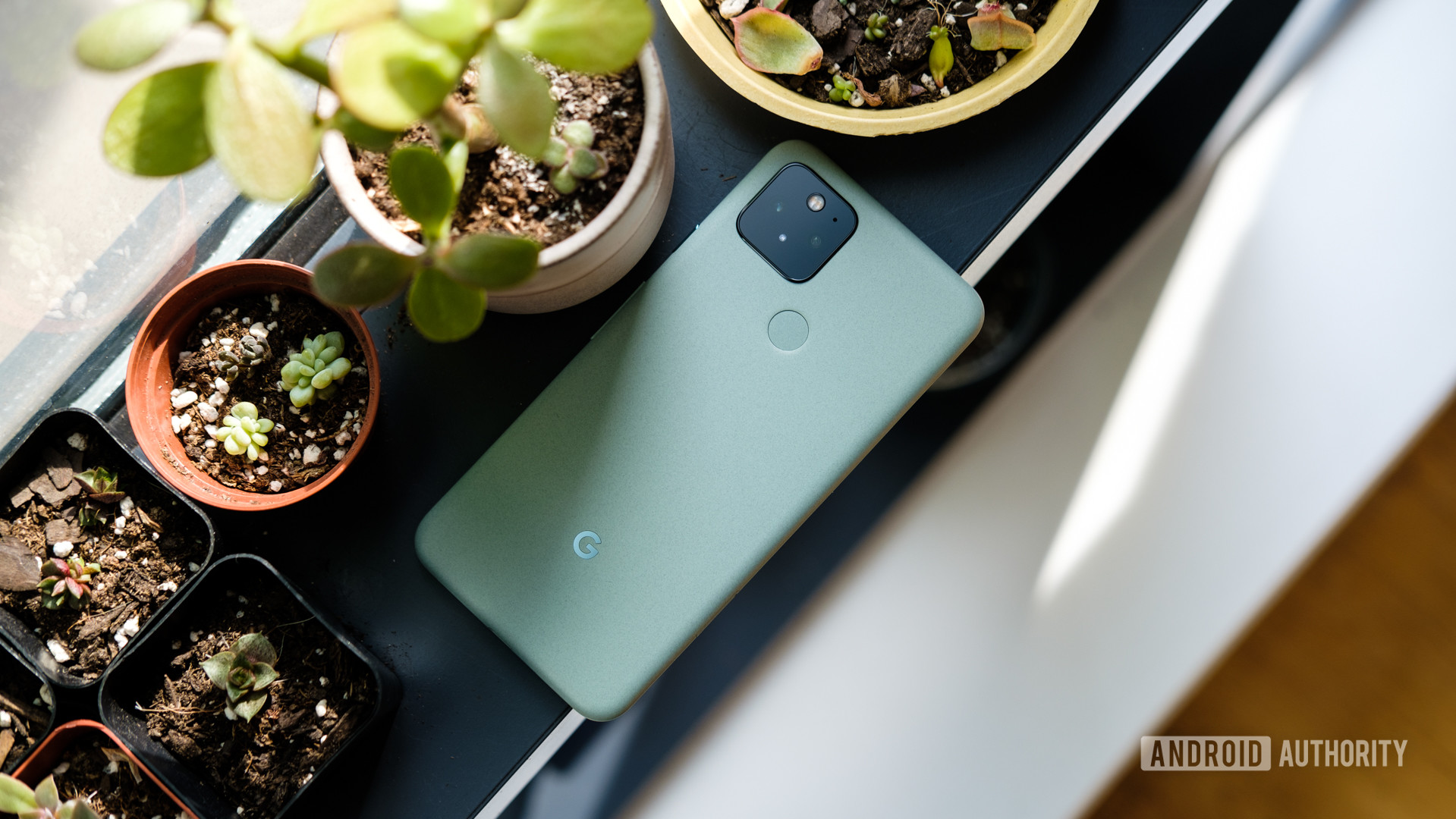
Inside, the Pixel 5 is effectively a souped-up version of the Pixel 4a 5G. It has the same Qualcomm Snapdragon 765G processor you’ll find in the Pixel 4a 5G, which gives it 5G connectivity and faster overall speeds compared to the Snapdragon 730G in the Pixel 4a. Look at RAM though, and you’ll find 8GB, which is 2GB more than that of the Pixel 4a 5G. 8GB of RAM should be plenty for the next few years, and it’s nice that Google included this in the Pixel 5, especially since the Pixel 4 only had 6GB of RAM.
Related: Snapdragon 765G vs Snapdragon 865
As far as storage is concerned, Google only sells this phone in one 128GB SKU. I think this is a fine amount of storage for most people, especially with Google’s excellent backup services like Google Photos and Google Drive.
The Pixel 5 also has some extra features that you won’t find in the Pixel 4a or Pixel 4a 5G. For one, there’s wireless charging, which I appreciate quite a lot. Like I mentioned earlier, this is an aluminum phone, so it’s a pretty big feat that Google was able to get wireless charging. There’s a cutout in the aluminum to house the coil, and then Google added the bio-resin material on top to give it its finish. The Pixel 5 has reverse wireless charging as well, which allows you to charge other devices like the Pixel Buds.
The Pixel 5 also has IP68 water and dust resistance, which can be a big deal if you’re around moisture or water a lot. This a feature all flagships should have, so it’s nice to see Google following the trend here.
| Pixel 5 | Pixel 4a 5G | Pixel 4a | |
|---|---|---|---|
Display | Pixel 5 6-inch OLED 2,340 x 1,080 resolution 90Hz refresh rate | Pixel 4a 5G 6.2-inch OLED 2,340 x 1,080 resolution 60Hz refresh rate | Pixel 4a 5.81-inch OLED 2,340 x 1,080 resolution 60Hz refresh rate |
Processor | Pixel 5 Qualcomm Snapdragon 765G | Pixel 4a 5G Qualcomm Snapdragon 765G | Pixel 4a Qualcomm Snapdragon 730 |
RAM | Pixel 5 8GB | Pixel 4a 5G 6GB | Pixel 4a 6GB |
Storage | Pixel 5 128GB No microSD card slot | Pixel 4a 5G 128GB No microSD card slot | Pixel 4a 128GB No microSD card slot |
Camera | Pixel 5 Rear: Main: 12.2MP, f/1.7, 1.4µm pixels, optical + electronic image stabilization Secondary: 16MP, f/2.2, 1 micron pixel, ultra-wide (107 degree FoV) Front: 8MP sensor, f/2.0, 1.12µm pixels, fixed focus, 83-degree field-of-view | Pixel 4a 5G Rear: Main: 12.2MP, f/1.7, 1.4µm pixels, optical + electronic image stabilization Secondary: 16MP, f/2.2, 1 micron pixel, ultra-wide (107 degree FoV) Front: 8MP sensor, f/2.0, 1.12µm pixels, fixed focus, 83-degree field-of-view | Pixel 4a Rear: 12.2MP, f/1.7, 1.4µm pixels, optical + electronic image stabilization Front: 8MP sensor, f/2.0, 1.12µm pixels, fixed focus, 83-degree field-of-view |
Battery | Pixel 5 4,080mAh | Pixel 4a 5G 3,800mAh | Pixel 4a 3,140mAh |
Software | Pixel 5 Android 11 | Pixel 4a 5G Android 11 | Pixel 4a Android 11 |
Price | Pixel 5 $699 | Pixel 4a 5G $499 | Pixel 4a $349 |
Should you buy the Google Pixel 5?
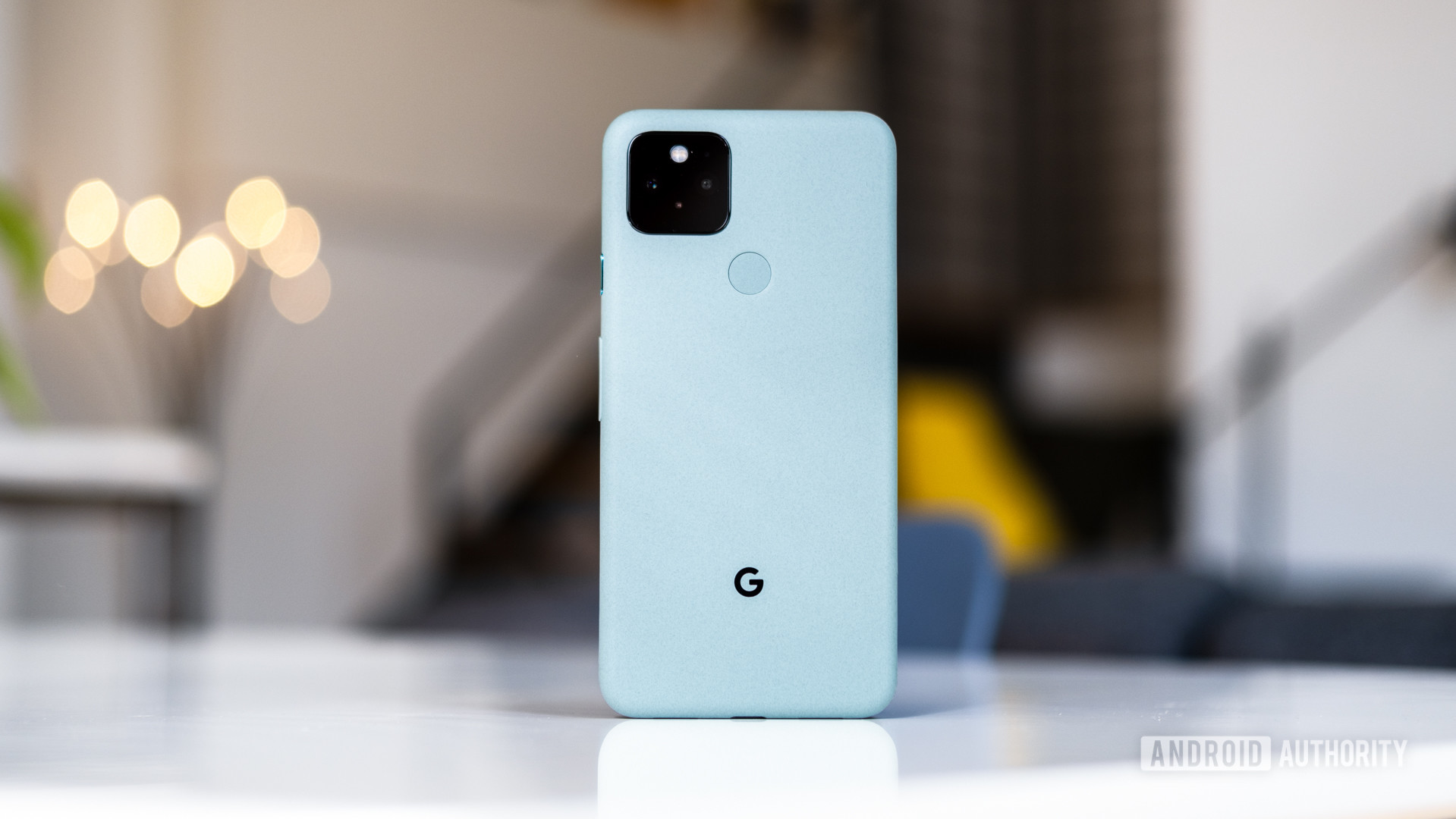
At $699, the Google Pixel 5 is one of the most affordable flagships Google has released since the Pixel series was born. That being said, $699 is still a lot of cash, and there are plenty of people who were disappointed that Google didn’t use the flagship Snapdragon 865 processor. Personally, I think the 765G was a great choice. It will offer enough performance for most people at a more affordable price than last year. But I think $649 would have been a better price, especially since the Pixel 4a 5G is $150 more expensive than the Pixel 4a. In this house, we like consistency.
All this being said, we’ve just received the device, and need to actually use it for a while before we offer our final verdict. Be sure to stay tuned so you don’t miss our upcoming Pixel 5 review. Until then, make sure you check out our hands-on of the Pixel 4a 5G, as well as our full review of the Pixel 4a.
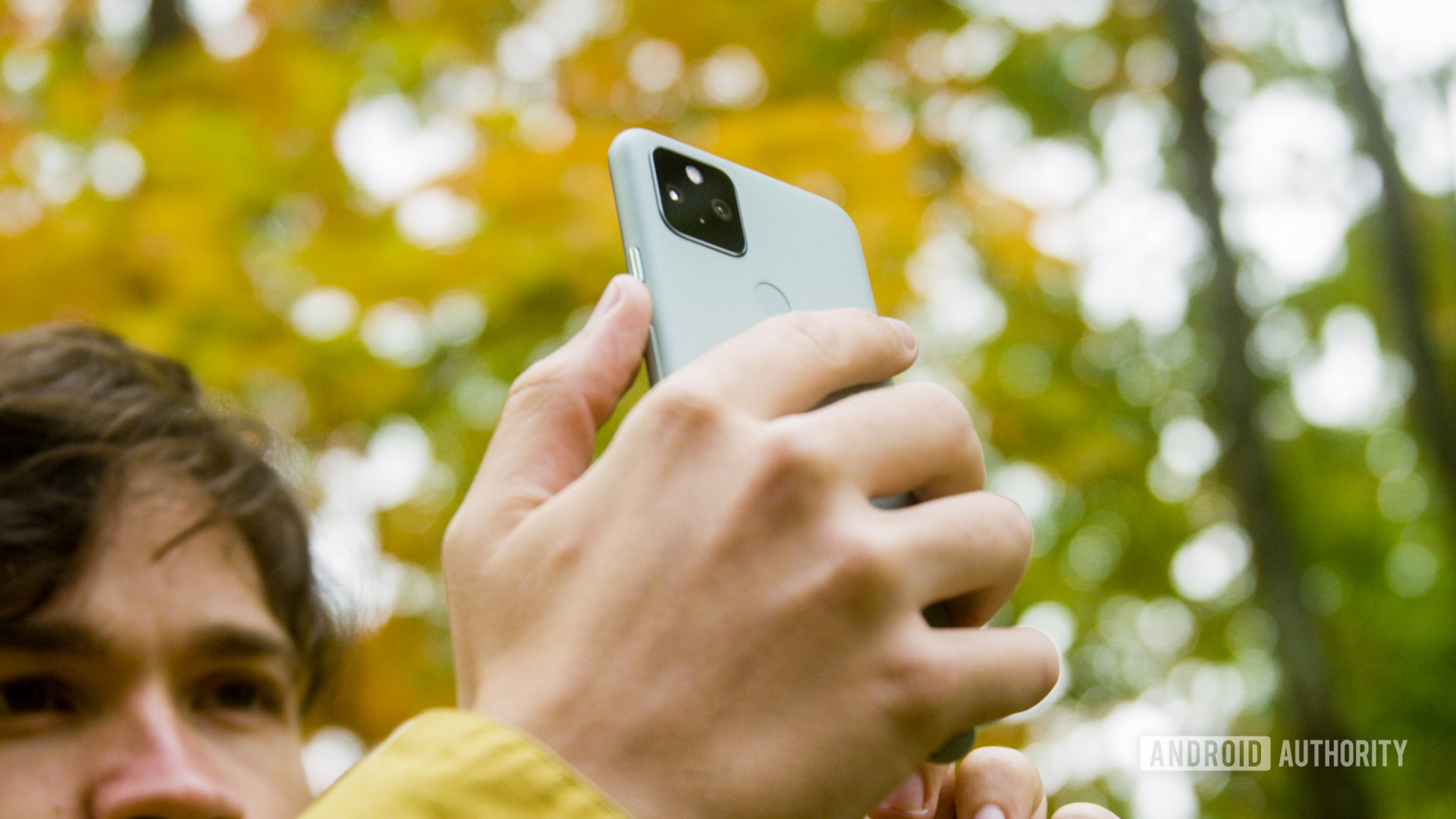
What do you think about the Pixel 5? Let us know your thoughts in the comments down below!